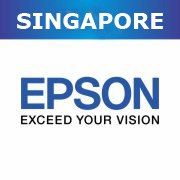News -
Choosing the right projector for your classroom
BUYING a new projector for a classroom can be a mind-boggling experience, especially for less tech-savvy educators who have to make sense of an alphabet soup of acronyms and technical terms.
This buying guide will help answer common questions regarding terminology, features and other important considerations when you are choosing a projector for a classroom.
Interactivity
These days, projectors are more than just ‘dumb’ devices that project images onto a wall or screen. Leading projectors in the market tout smart, interactivity capabilities, such as projecting images that support touch gestures and interactive pens. This opens up exciting possibilities in teaching and learning.
Take the Epson EB-595Wi, for example. As the world's first 3LCD finger-touch interactive projector, the EB-595Wi doesn't just let educators show videos and other content in class. It’s also a virtual whiteboard that supports touch gestures on any hard surface.
Like using a smartphone or tablet, you’ll be able to scroll, press, tap, pinch in/out and rotate images using your fingers – without a PC. Both teachers and students can also annotate on the onscreen image with up to six fingers and two interactive pens, thus encouraging student-and-teacher interaction on the same screen. The interactive pens or finger work like computer mice, and are designed to provide an easy grip for children and adults.
Interactive projectors will let you connect multiple PCs, tablets and smartphones over a wireless network to foster collaboration among users, who can concurrently annotate on their individual devices.
With Epson’s interactive projectors, teachers can get students to present their work during classes. Up to 50 students, with both smart devices and PCs, can be connected wirelessly to each projector. At any one time, a teacher can assign up to four different students to deliver presentations on the screen. The teacher will serve as a moderator to select and control which screens get projected to prevent tampering.
Colour and white brightness
Projectors come in a range of brightness, which are measured in lumens. The brighter the projector, the higher the lumen rating, and, all else being equal, the more it will cost.
When shopping for a projector, be sure to look for two lumen specifications: one for colour brightness and one for white brightness.
However, many projector brands only indicate the white brightness levels of their projectors. This does not give users the full picture, as many projectors’ colour light output is significantly dimmer than their white light.
On the other hand, Epson measures and publishes the brightness of both white and coloured light emitted by its projectors. To ensure customers enjoy rich, natural-looking colour, all Epson 3LCD projectors deliver the same white and colour light output.
And because 3LCD projectors are powered by three chips, they can deliver up to three times higher colour brightness and up to three times wider colour gamut than 1-chip projectors.
The amount of brightness you need is determined by the room ambient light condition that you plan to use the projector. For classrooms, conference rooms or rooms with controlled lighting environment, go for a projector with a minimum of 2,500 lumens.
Throw distance
A projector's throw distance is the distance between the projector and the image on the screen.
While a long throw distance is required for projecting very large screens, say, in an auditorium, a short throw distance is more ideal for smaller rooms such as a classroom to reduce shadows and eye glare. Short-throw projection generally refers to a distance between three to eight feet away from projector to screen to project an 80-inch diagonal screen.
With ultra-short throw projectors, which are usually installed on the wall or ceiling nearer to the wall, you can completely eliminate shadows and eye glare. Ultra-short throw projection refers to a distance between zero to four feet away from projector to screen.
Epson’s ultra-short throw projectors such as the EB-595Wi only require 36cm to project an 80-inch screen. This means for the first time, teachers can present concepts and ideas without having light beams shining on their faces, making teaching more pleasant.
Additionally, Epson’s ultra-short throw projectors deliver consistent colour uniformity and stable performance when using interactive pens, making classes more enjoyable and stress-free.
Connections
Many projectors support multiple content sources, but you want to be sure that the one you’re buying can project content from your media players and other sources that you’ve been using to enhance the learning experience for students.
Besides supporting wireless projections via a PC or smart device, Epson’s interactive projectors also let you play high-definition videos using Blu-ray players or Apple TV via HDMI ports.
Ease of use
You shouldn’t need to jump through too many hoops just to set up a projector. For hassle-free projection, you'll want to look for some features that enable a quick setup — so you can project right away.
Topics
- Adult education
Categories
- projectors & visual instruments
- 3lcd
- projectors
- interactive
- interactivity
- education
- schools
- learning
- innovative
- finger touch
